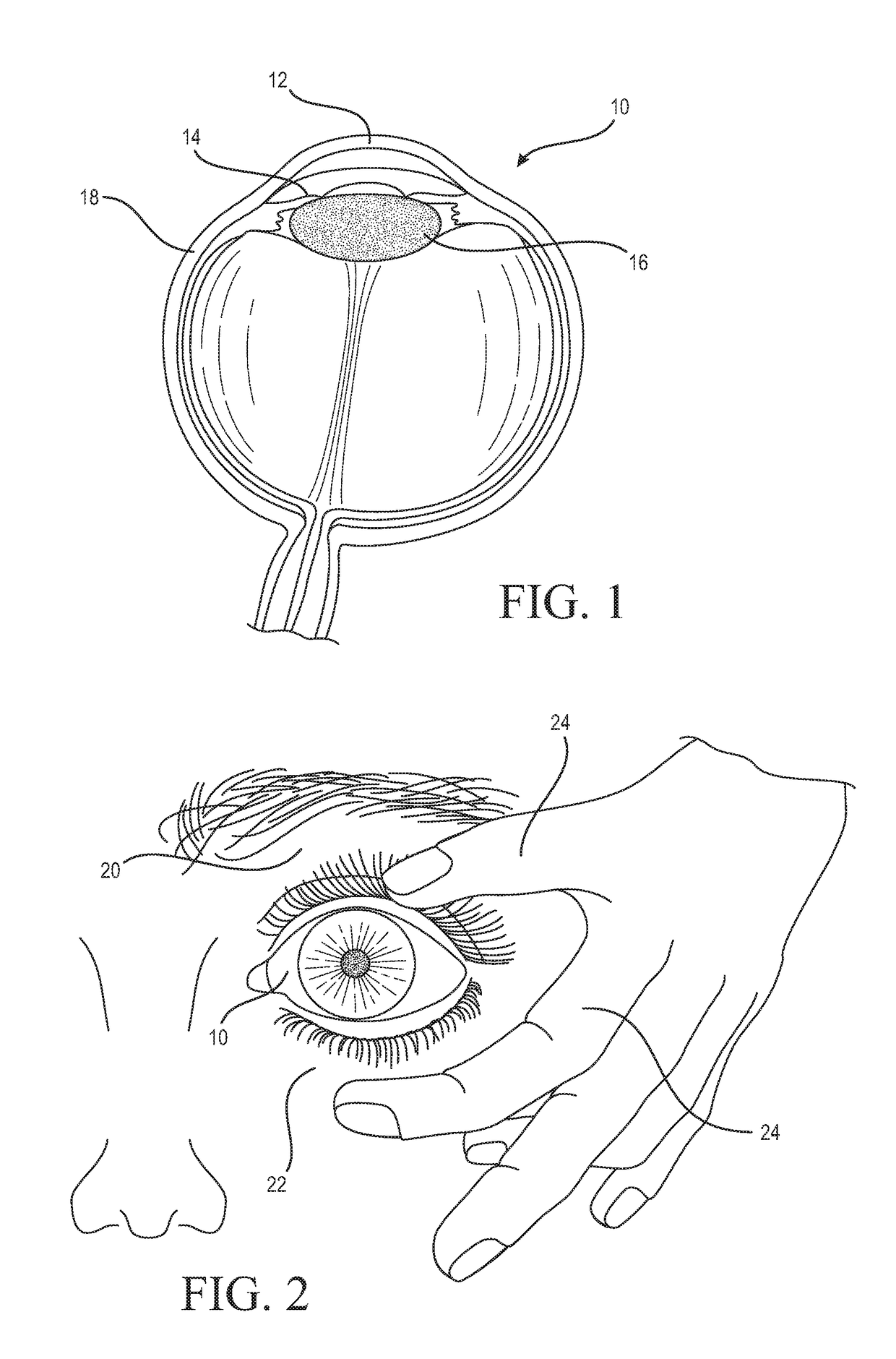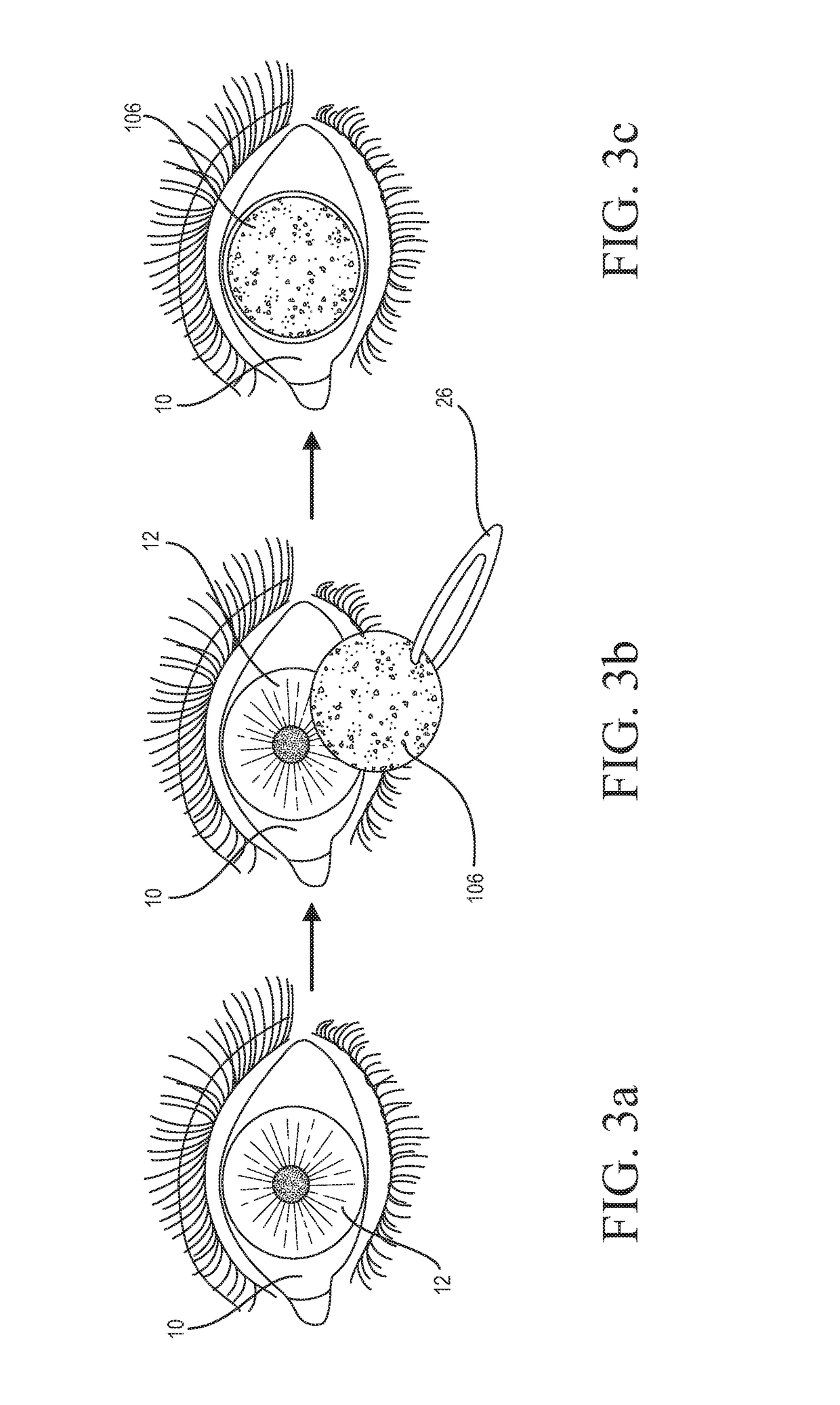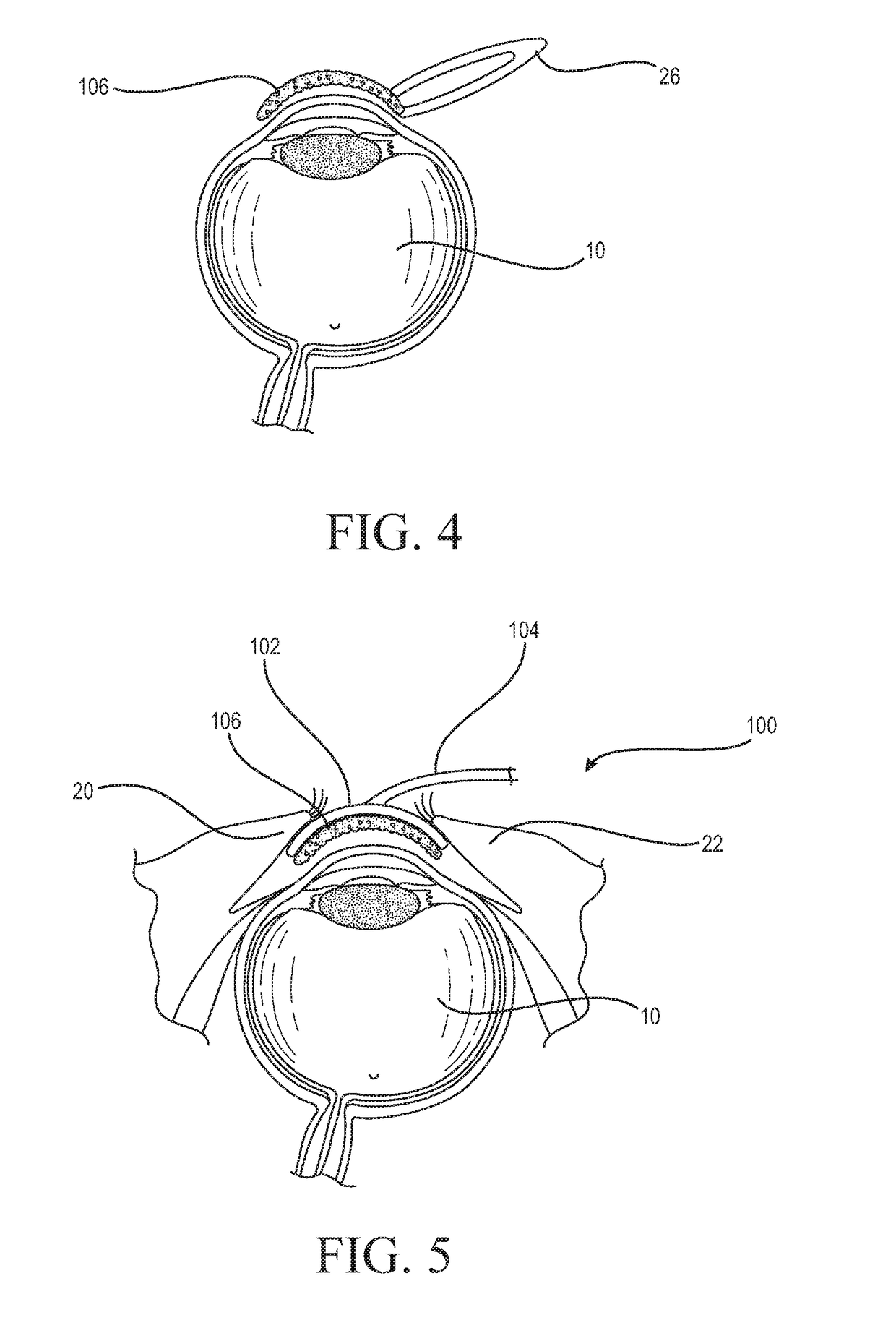Medicinal solution to be continuously or pulse-delivered to the eye for treating ophthalmological conditions/maladies
a technology of ophthalmological conditions/maladies and solutions, applied in the field of medicinal solutions, can solve the problems of weakened cornea, aforesaid vision distortion, vision distortion, etc., and achieve the effect of enhancing the efficiency and effectiveness of the medication
- Summary
- Abstract
- Description
- Claims
- Application Information
AI Technical Summary
Benefits of technology
Problems solved by technology
Method used
Image
Examples
example 1
[0023]A first solution containing riboflavin may comprise a 1000 ml 0.01% to a 0.9% sodium chloride solution, with a 0.45% sodium chloride solution being preferred, comprising 1 mg to 10000 mg of riboflavin, with a preferred amount being 6000 mg of riboflavin, for a final concentration of 0.0001% to 1.0%, or a preferred concentration of 0.6%, 1 mg to 10000 mg of proparacaine or a similar anesthetic, with a preferred amount being 1000 mg of proparacaine, for a final concentration of 0.0001% to 1.0%, or a preferred concentration of 0.1%, 1 mg to 3000 mg of benzalkonium chloride or a similar preservative, with a preferred amount being 500 mg, for a final concentration of 0.0001% to 0.3%, or a preferred concentration of 0.05%, 1 mg to 500 mg of naphazoline hydrochloride or a similar vascoconstrictor, with a preferred amount being 50 mg, for a final concentration of 0.0001% to 0.05%, or a preferred concentration of 0.005%, and 1 mg to 40000 mg of pilocarpine hydrochloride or a similar mi...
example 2
[0024]A second solution containing riboflavin may comprise a 1000 ml 0.01% to 0.9% sodium chloride solution, with a 0.45% sodium chloride solution being preferred, comprising 1 mg to 10000 mg of riboflavin, with a preferred amount of 5500 mg, for a final concentration of 0.0001% to 1.0%, or a preferred concentration of 0.55%, 1 mg to 10000 mg of proparacaine or a similar anesthetic, with a preferred amount being 500 mg of proparacaine, for a final concentration of 0.0001% to 1.0%, or a preferred concentration of 0.05%, and 1 mg to 3000 mg of benzalkonium chloride or a similar preservative, with a preferred amount of 250 mg of benzalkonium chloride, for a final concentration of 0.0001% to 0.3% or a preferred concentration of 0.025%.
example 3
[0025]A third solution containing riboflavin may comprise a 1000 ml 0.01% to 0.9% sodium chloride solution, with a 0.45% sodium chloride solution being preferred, comprising 1 mg to 10000 mg of riboflavin, with a preferred amount being 2500 mg of riboflavin, for a final concentration of 0.0001% to 1.0%, or a preferred concentration of 0.25%, 1 mg to 10000 mg of proparacaine or a similar anesthetic, with a preferred amount being 750 mg of proparacaine, for a final concentration of 0.0001% to 1.0%, or a preferred final concentration of 0.075%, 1 mg to 3000 mg of benzalkonium chloride or a similar preservative, with a preferred amount being 100 mg of benzalkonium chloride, for a final concentration of 0.0001% to 0.3%, with a preferred concentration of 0.01%, and 1 mg to 40000 mg of pilocarpine hydrochloride or a similar miotic, with a preferred amount being 200 mg of pilocarpine hydrochloride, for a final concentration of 0.0001% to 4.0% or a preferred concentration of 0.02%.
PUM
| Property | Measurement | Unit |
|---|---|---|
| concentrations | aaaaa | aaaaa |
| concentrations | aaaaa | aaaaa |
| concentration | aaaaa | aaaaa |
Abstract
Description
Claims
Application Information
 Login to View More
Login to View More - R&D
- Intellectual Property
- Life Sciences
- Materials
- Tech Scout
- Unparalleled Data Quality
- Higher Quality Content
- 60% Fewer Hallucinations
Browse by: Latest US Patents, China's latest patents, Technical Efficacy Thesaurus, Application Domain, Technology Topic, Popular Technical Reports.
© 2025 PatSnap. All rights reserved.Legal|Privacy policy|Modern Slavery Act Transparency Statement|Sitemap|About US| Contact US: help@patsnap.com



